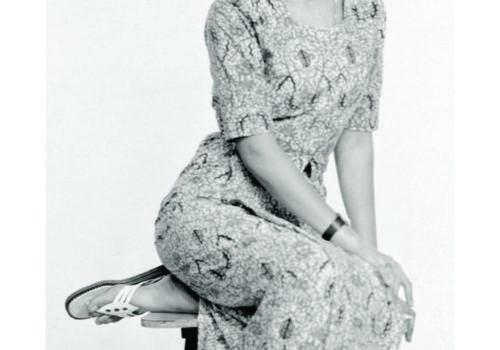Yangon Photo 1979, presented by the Austrian exhibition curator Lukas Birk, is the first showcase of images taken in the late 1970s at Bellay Photo Studio in Yangon. Funnily enough, it is also the exhibition that has generated the most selfies from the Maha Bandula Park public.
Mesmerized with smiles on their faces, the women of the Burmese capital give into the game and love to pose in front of the full-length portraits of those who came before them with unusual styes. The photos, human-sized and in black and white, reveal a curious syncretism of traditional Burmese clothing and Western apparel: mini-skirts, marine suits, and even bell-bottoms, so symbolic of the hippie movement. A striking contrast with the fashion of the public, which, almost forty years later, still dress in a traditional style – most often in a blouse, a longyi, or a sarong (pieces of fabric used as a skirt for men and women), but always colorful and elegant.
Under the regime of Ne Win, the dictator who, from 1962 to 1988, cut off the country from the rest of the world during the “Burmese Way to Socialism”. Stylish Western clothing was practically nowhere to be found. Only the photo studios had a choice of exceptional clothing for their clients buying through the black-market clothing, shoes, and accessories. Though not officially banned, these garments were certainly never seen on the streets of Yangon, where a political atmosphere much too conservative for this type of individual expression reigned.
Yangon Photo 1979, with work by photographer Har Si Yone (Bellay Studio), reveals a hidden part of Burmese society during the 1970s. Far from the street conformity, clothing was often inspired by Burmese celebrities from the film and music world, and even from illegally imported fashion magazines. The studios became a fashion freedom place for the young women of the capital, discreetly trying to bring color to their daily lives. Lukas Birk answered The Eye of Photography’s questions.
How did you discover the archives from the Bellay Photo Studio and what triggered your interest?
The images from Bellay Photo Studio are just one section from a larger archive I have been working on for the last three years. The Myanmar Photo Archive, as I titled it, is focusing on photographic practice by Burmese photographers during or after the colonial period. The focus currently is in the 50s, 60s and 70s. In the course of my research for the archive I came across Tun Tun Lay the current owner of Bellay Photo Studio who told me that he still owns some of the negatives his father and founder of the studio took in the 60s and 70s. Although many of the negatives had been destroyed already I started to digitize around 4000 of them in the summer of 2016. The images are a very important record of Yangon’s downtown residents from that time. Many of Chinese origin – a community that greatly suffered under Ne Win’s reforms. What is so fascinating to me is that the photo studio at that time, and actually still today in most places in the world, is a parallel reality. As we see in the photos you can look like your favorite singer, change your style to something you admire but do not dare to be, you can be another person for the time of the shooting and keep that memory afterwards. The conservative Yangon of the 70s certainly did not allow for mini skirts and Western fashion elements but the studio was a free space without judgement.
How was your experience curating this exhibition at the Maha Bandula? What stroke you the most from this experience?
When I heard that the exhibition was going to be held in a public space I was certainly very excited. I am a believer in public installations and interventions. Further more as there is hardly any public art installations or activities in Yangon/Myanmar so I hoped it would draw people. I have worked in the public a lot in the past and know that size matters so that people can interact with the images and what they stand for. Christophe the curator of the festival was right away delighted by the idea. The life size prints or even a little larger then that certainly have a great attraction for people and the festivals installation of the images was very affective. It was fantastic to see all the interaction and excitement people had. After all everybody has a mother, aunt, sister or grandmother that has a similar image but to see it collectively is a very different experience.
Aline Deschamps
Aline Deschamps is a journalist, photographer, and a cultural project manager working in Paris and Bangkok.
9th Yangon Photo Festival
Yangon, Burma
http://www.yangonphoto.com
www.facebook.com/yangonphotofestival
Lukas Birk’s projects can be found at www.myanmarphotoarchive.org and www.lukasbirk.com
















